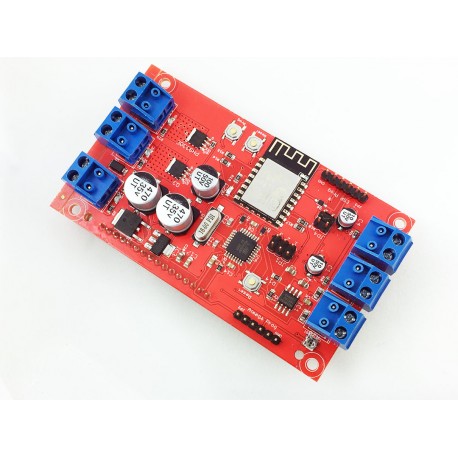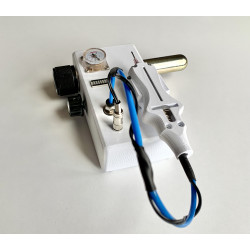No products
WiFi Temperature Controller
wifitemp
New product
2 Channel WiFi PID Temperature Controller
This product is no longer in stock
More info
Features:
- Standalone No PC Connection Required
- Based on the Arduino Diecimila and ESP8266 WiFi IC
- 2×16 Character LCD Display
- Embedded Web Server for parameter setting, remote monitoring, and WiFi configuration
- 2 High Power MOSFET Output (10A at 12V)
- 2 Thermistor, 1 Thermocouple Sensor Input
- Needs 12VDC as power source
- 2 independent PID Computation via Onboard dedicated Micro-controller.
- WiFi related activities done by other IC
Dual Independent PID Channels:
WiFiTemp can control 2 independent PID channels. You can assign each channel different sensors. The first channel can control a heating system while the other is dealing with the cooling. You can assign thermistor or thermocouple sensor for the PID channels.
Each PID channel support advanced PID control logic with PWM output. Each process parameter is fully configurable remotely from a web browser.
On board, MOSFETs can drive 10 amps. If you need more powerful output you can just connect a solid state relay to the board.
Hacker Friendly Design:
WiFiTemp has been designed and engineered to be 100% Arduino compatible. It is based on Atmega328 IC. The Wifi IC is another hero, esp8266. Both ICs have lots of example code and great community support.
The populated programming pins will help you to easily upload your own code via Arduino IDE. Our open source software will help you to start. You can customize every detail for your own needs. We can not wait to see how you hack this board for your own project.
Independent IC for Fast and Continuous PID Calculations:
The onboard Atmega328p microcontroller is dealing only with two PID computation. Esp8266 is responsible for the web server and driving the LCD. The two ICs are communicating with each other over the serial bus
Open Hardware, Open Source Design:
You can not only have the design files of the hardware but also the embedded source code for both microcontrollers.
On Board LCD display:
The onboard LCD display allows WiFiTemp to report all the information about the process. You can see the set temperatures and the real-time current temperatures for both PID channels.
WiFi Connectivity and Remote Control:
Independent WiFi IC serves all the data about the process to the IOT world. You can control the process from any device that has a web browser. These data can be pushed to the cloud for a logging purpose. The embedded web server not only serve the real-time process data but also provide a user interface to set the process params.
Possible Applications:
- Generic temperature and process control
- 3D Printer Extruder and heated bed controller.
- Smart home applications
- BBQ controller
- Home brewing
- Smart food dehydrator
- Other IOT applications

















